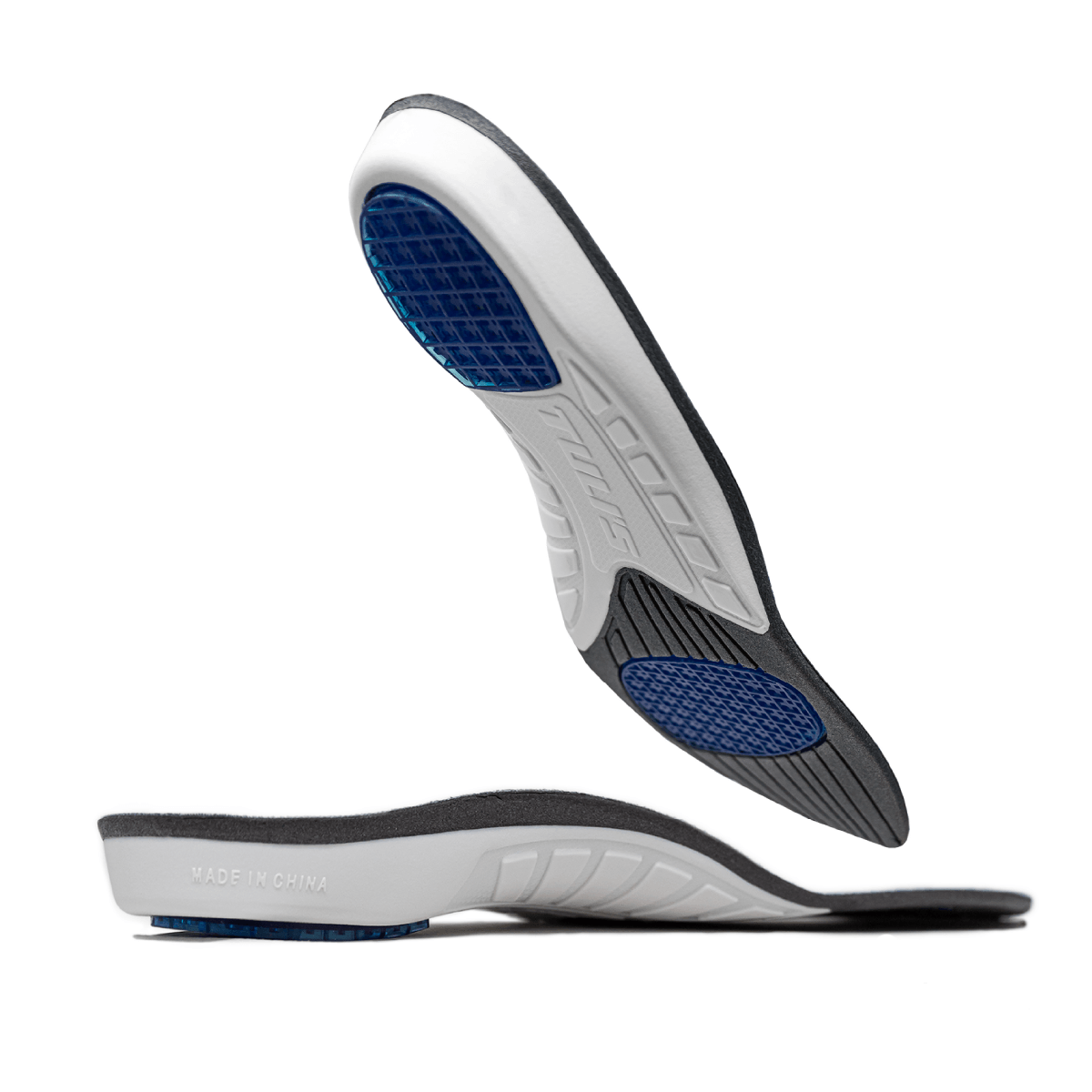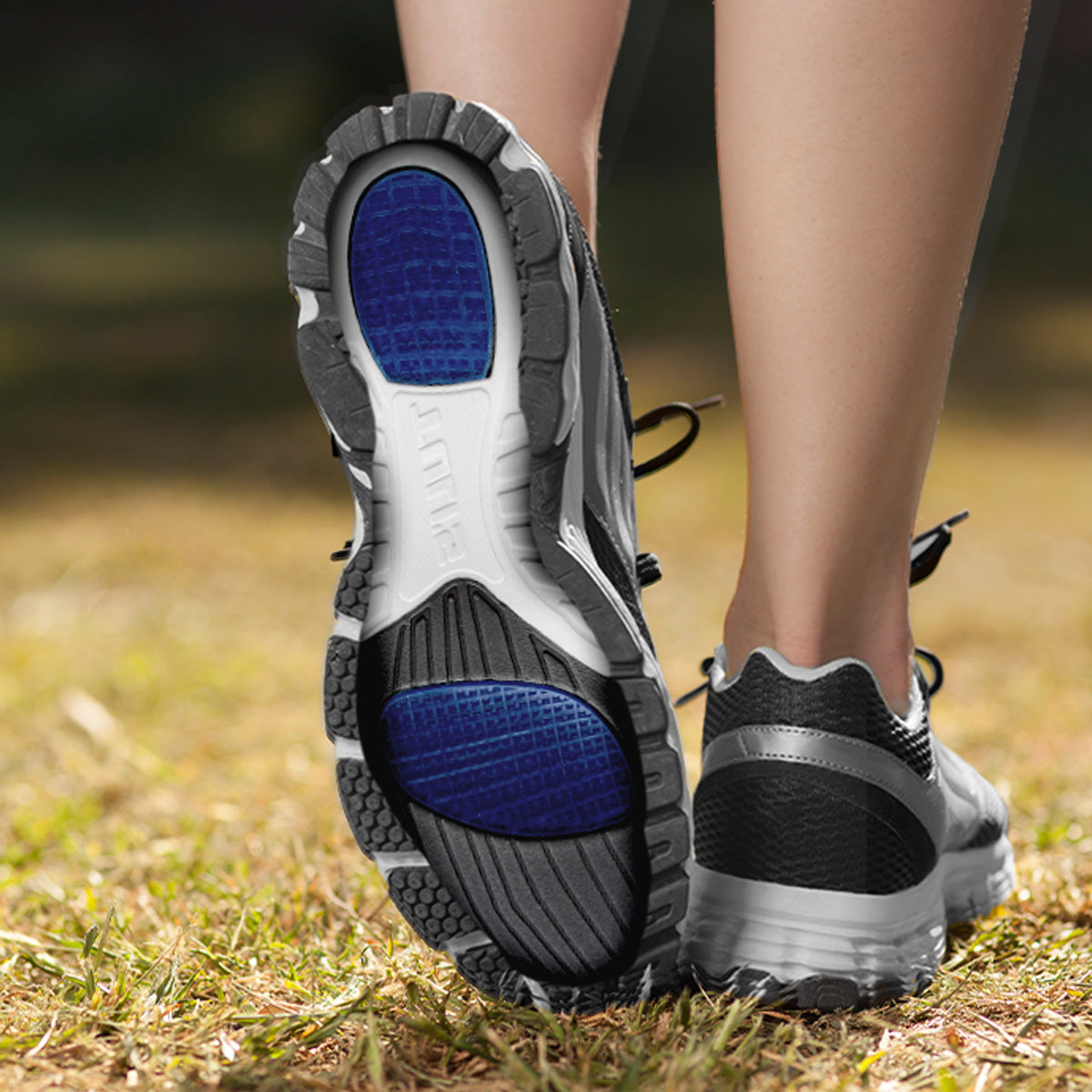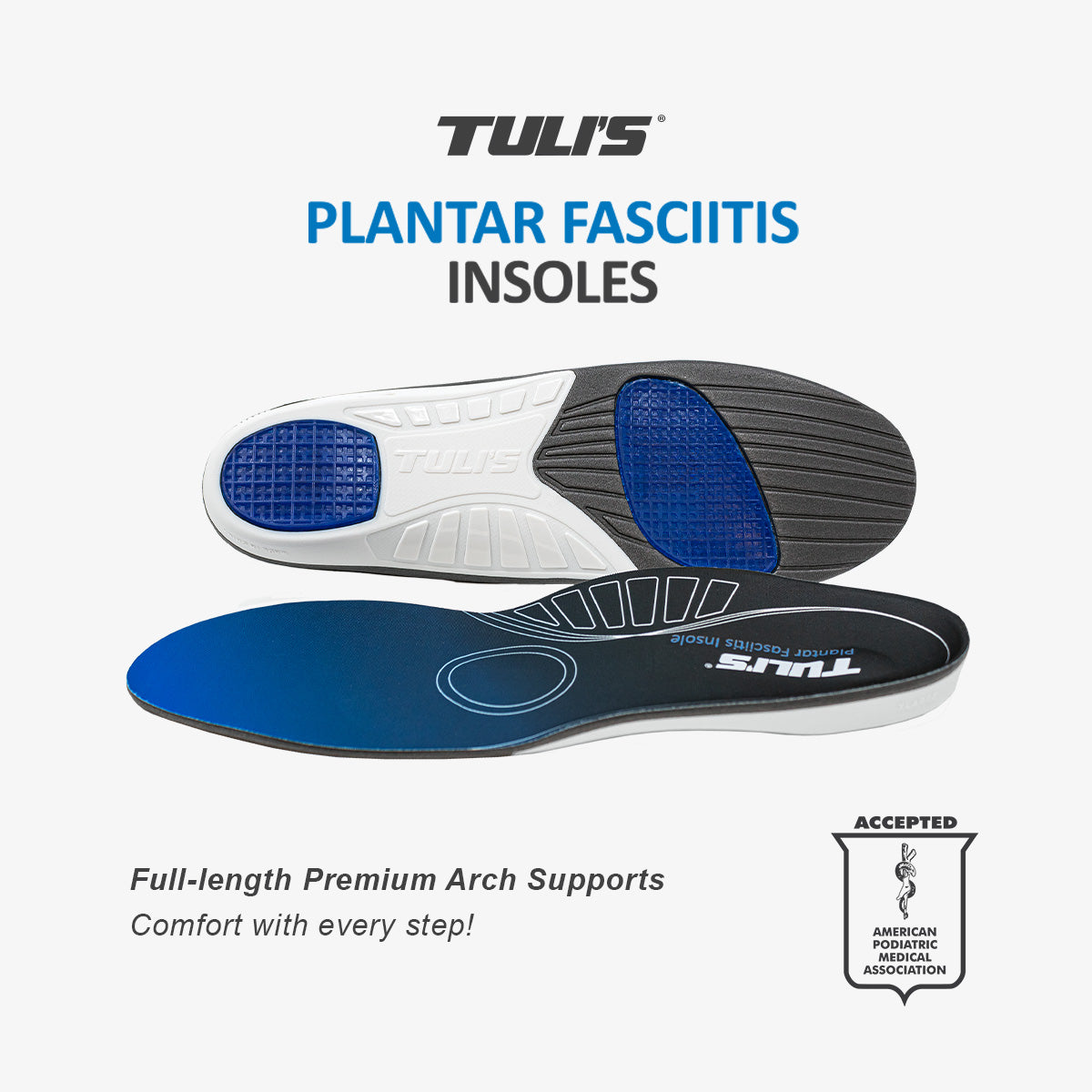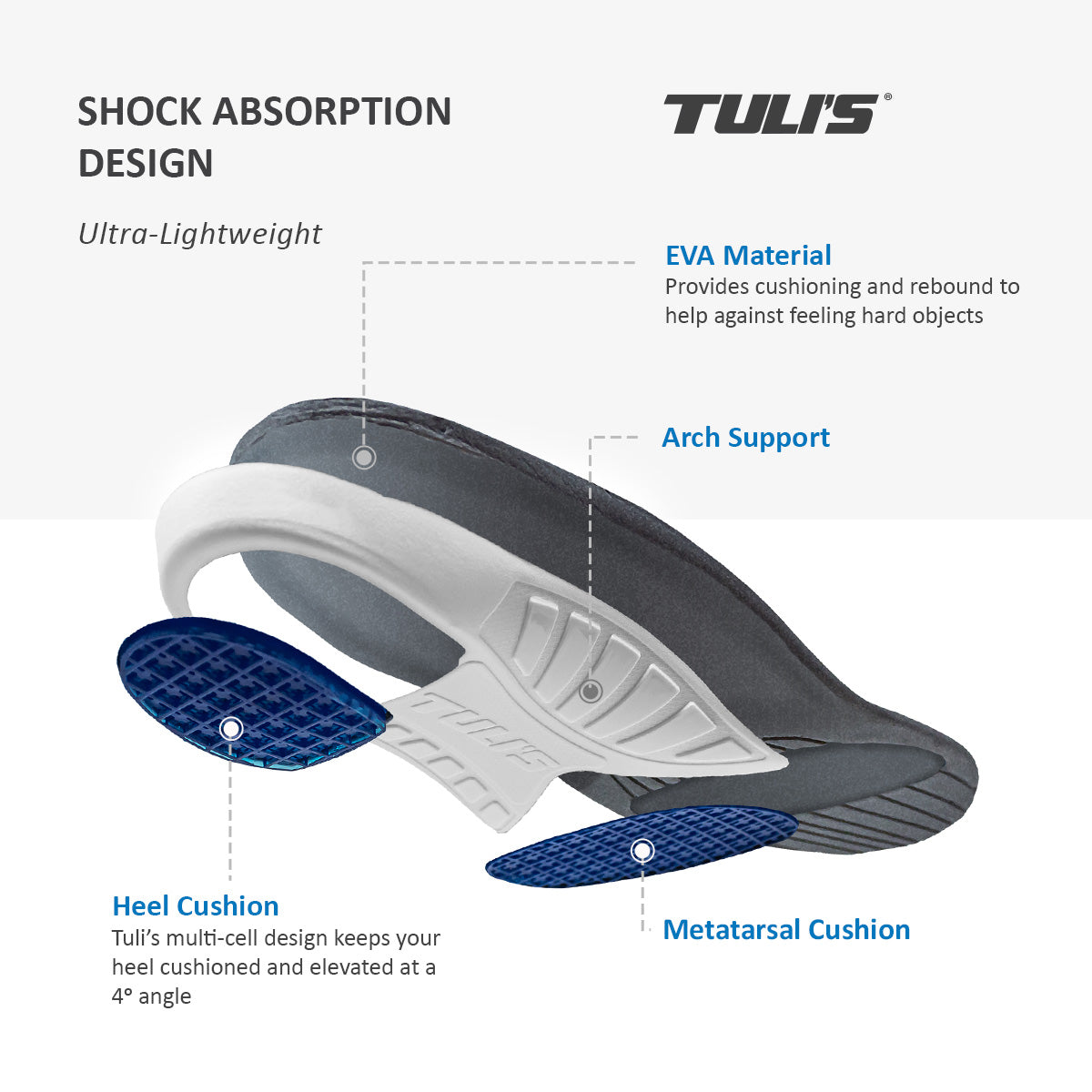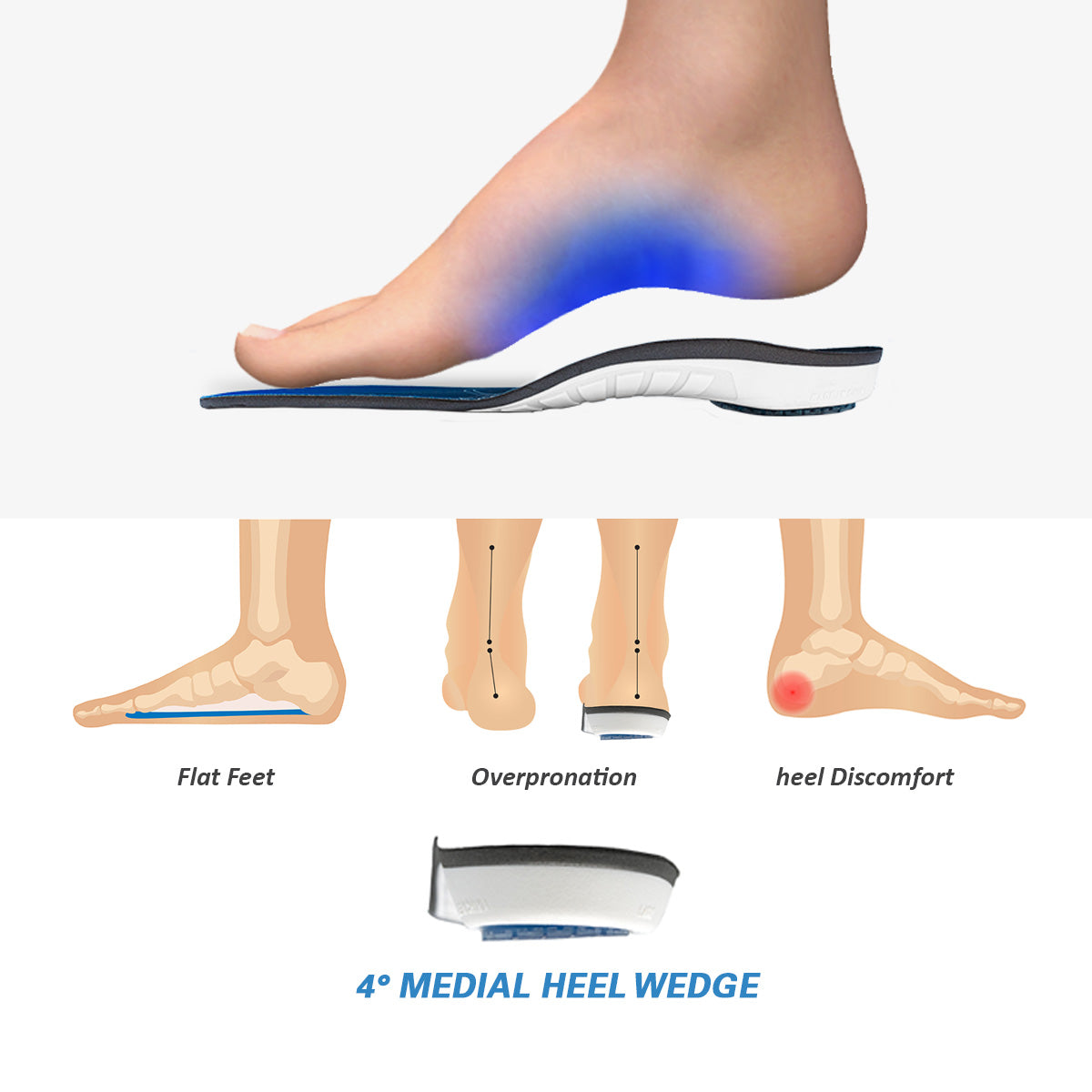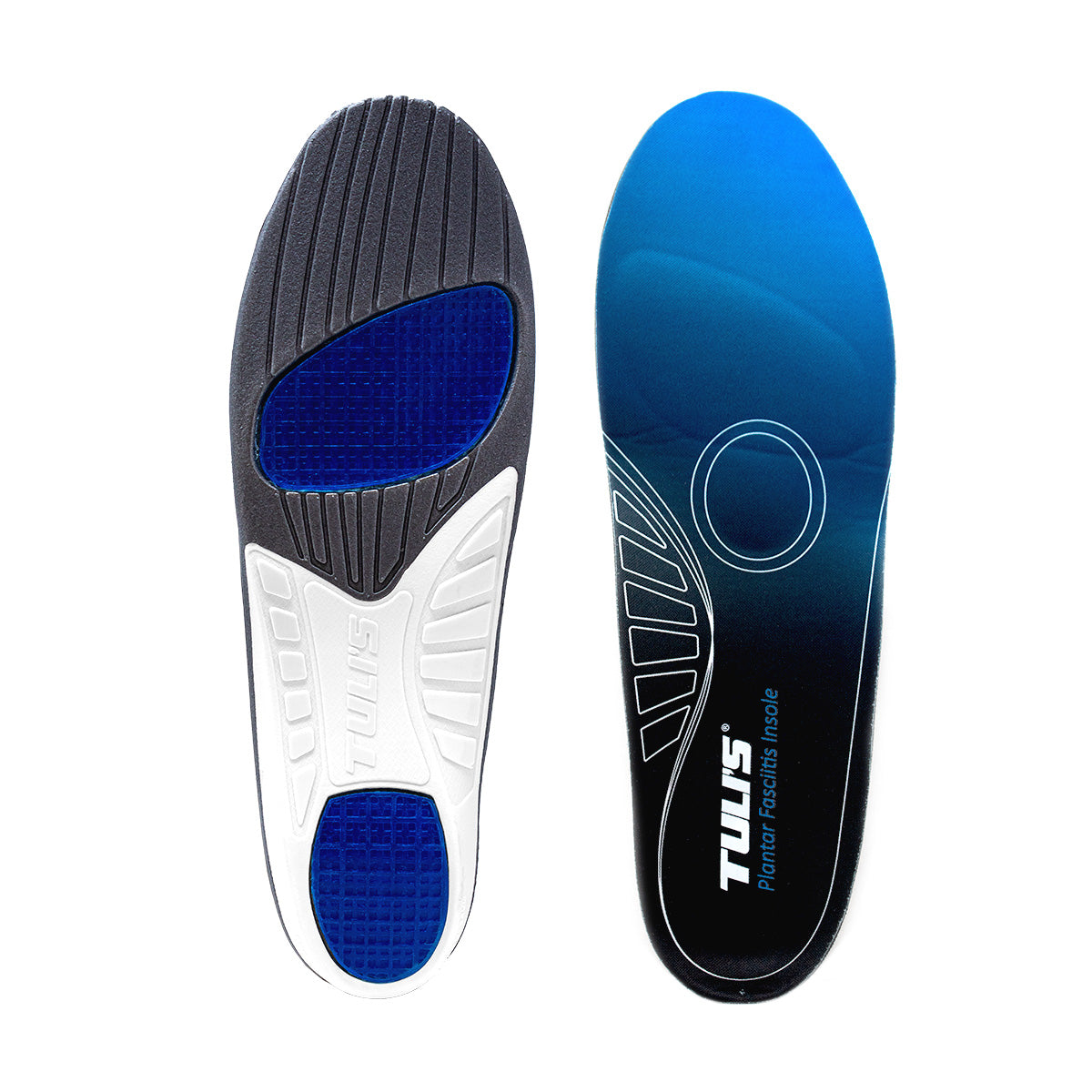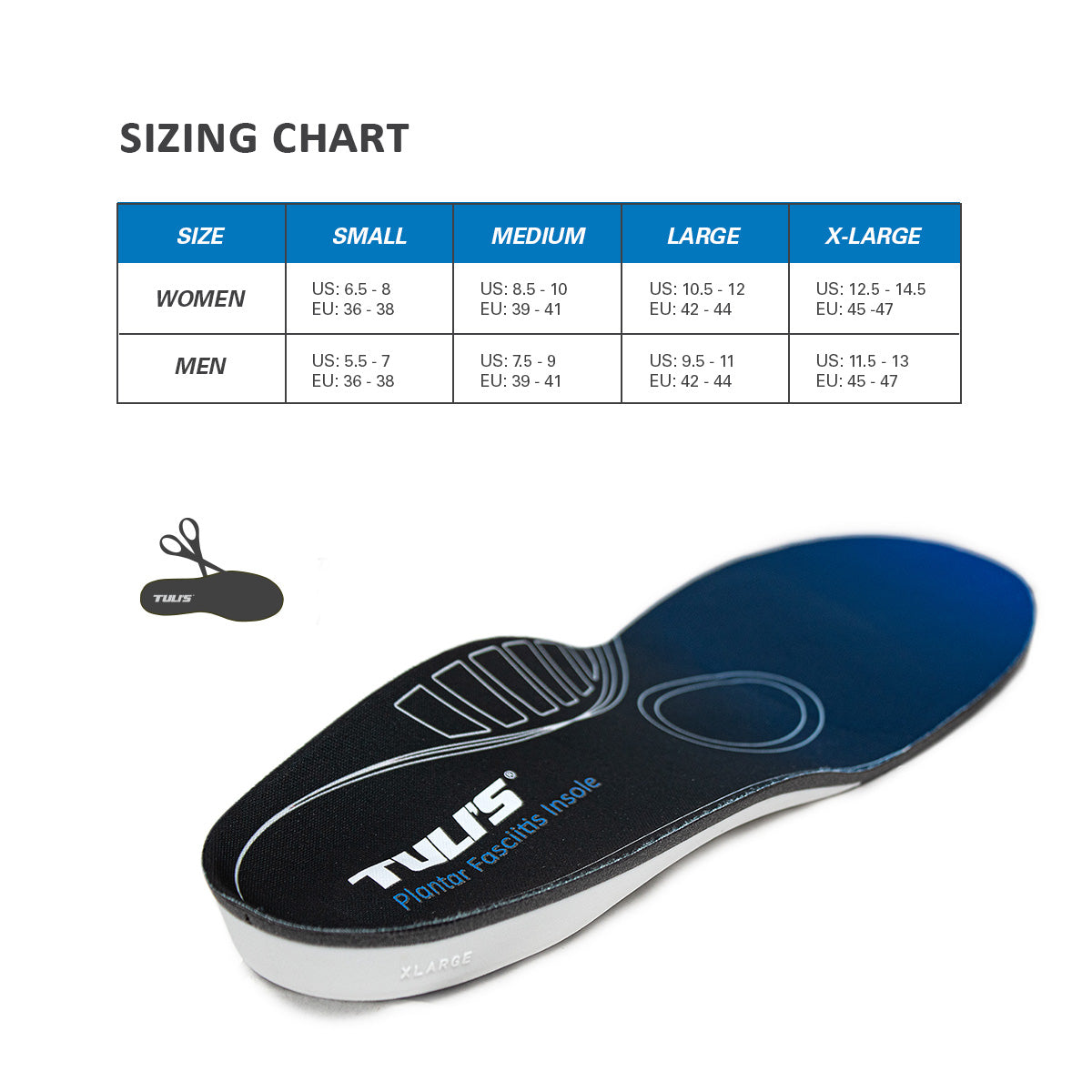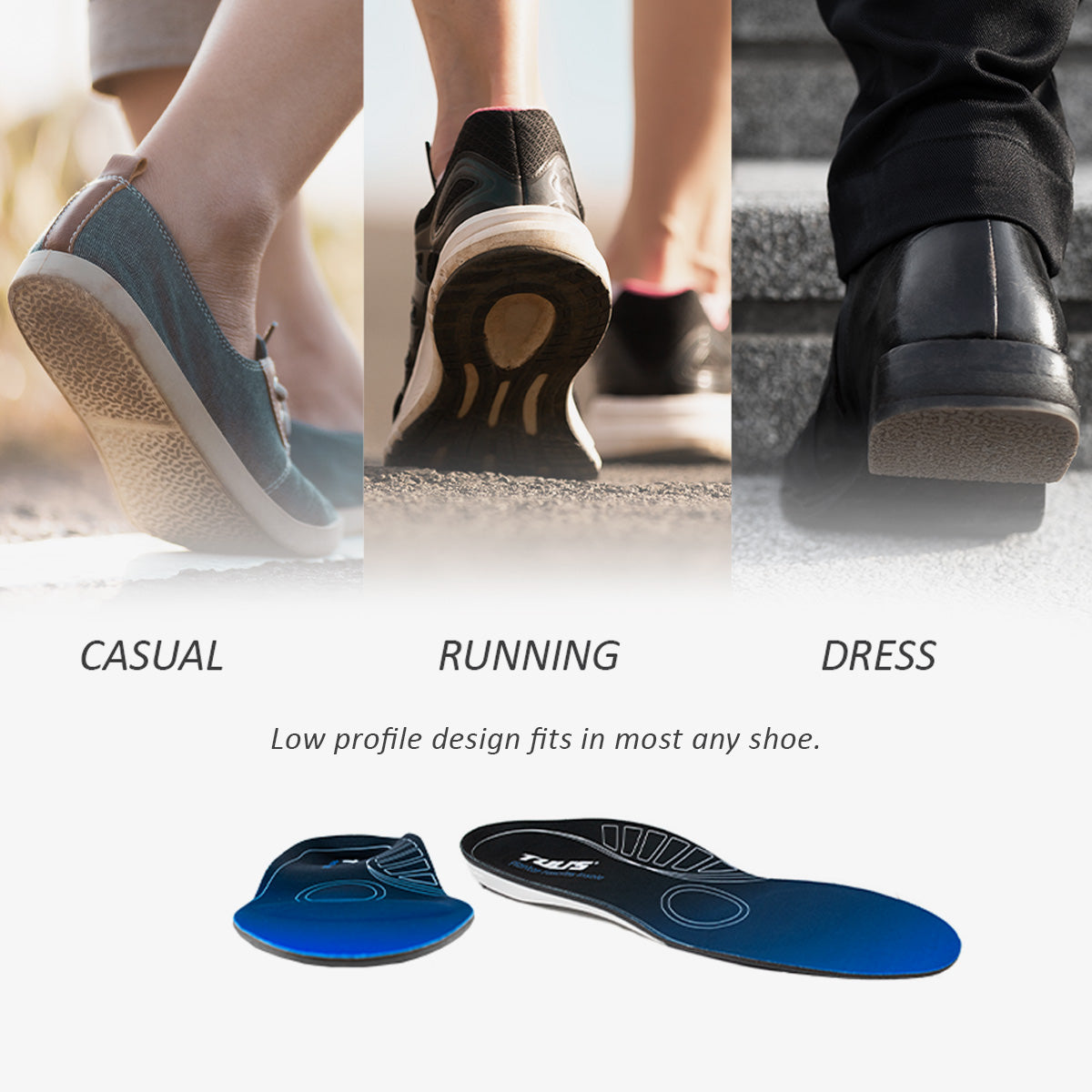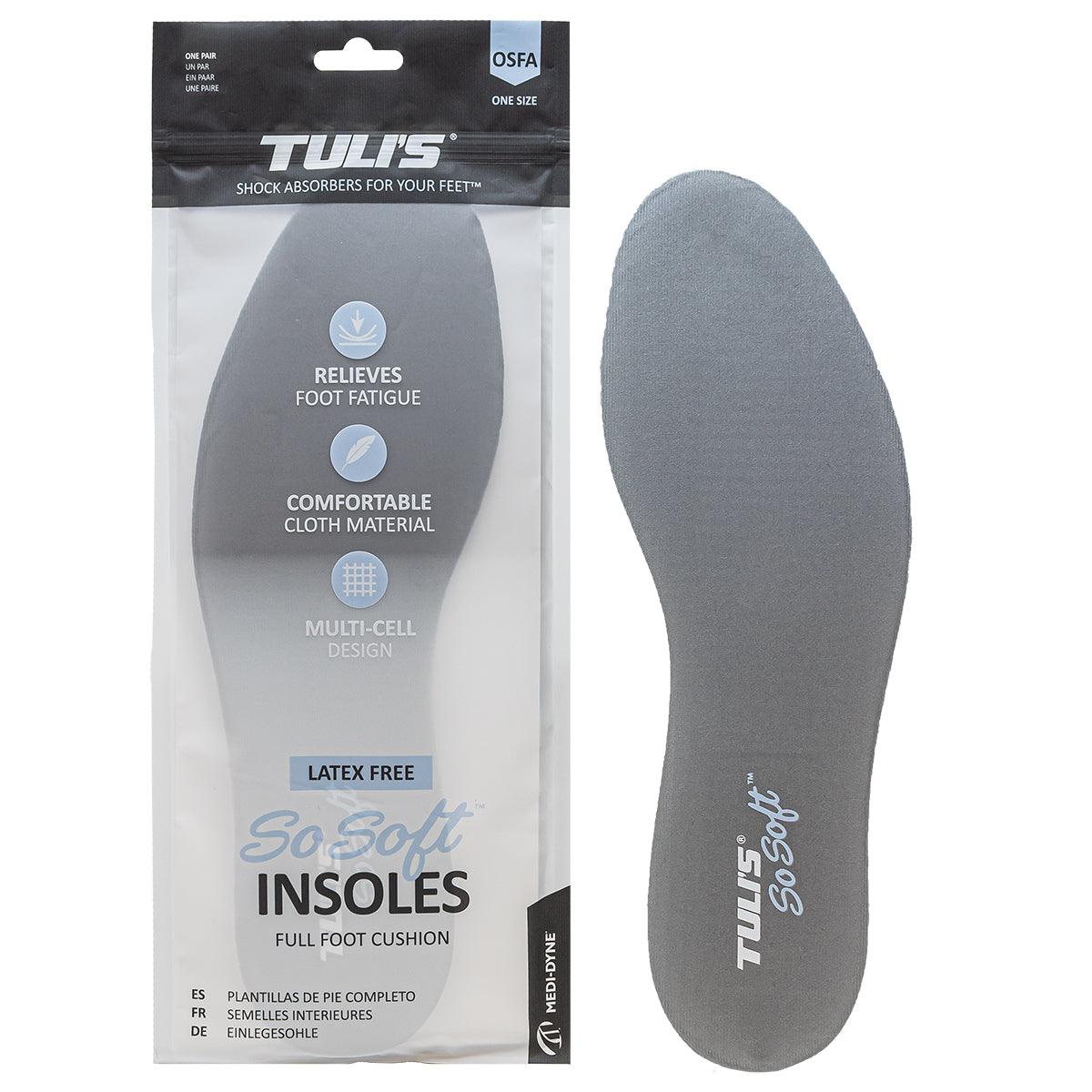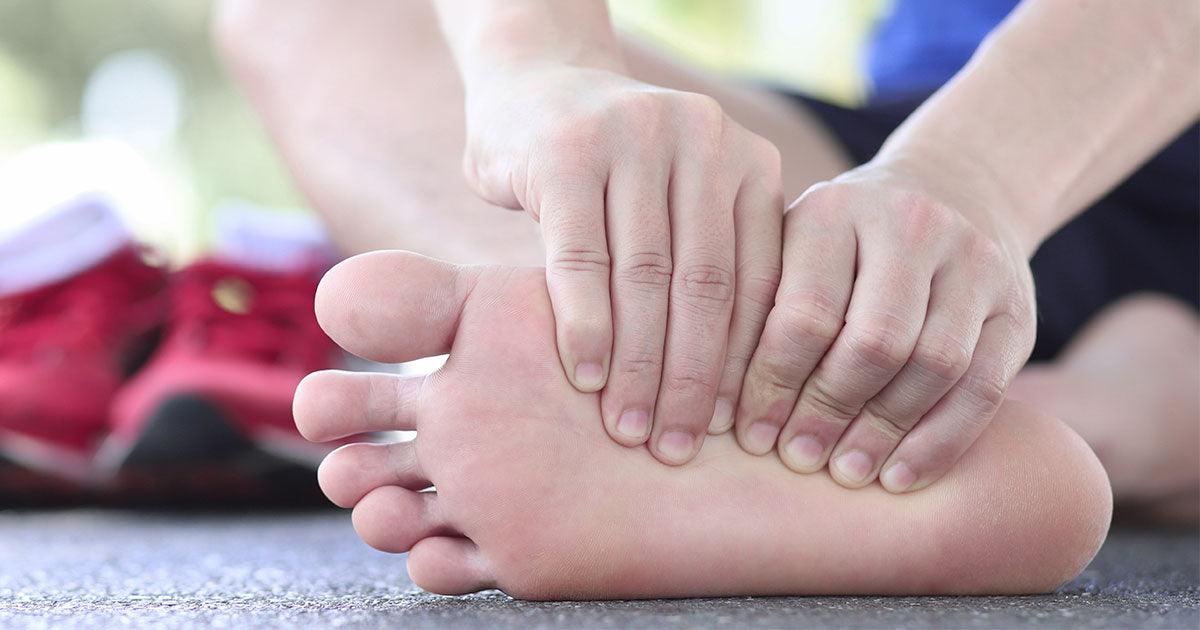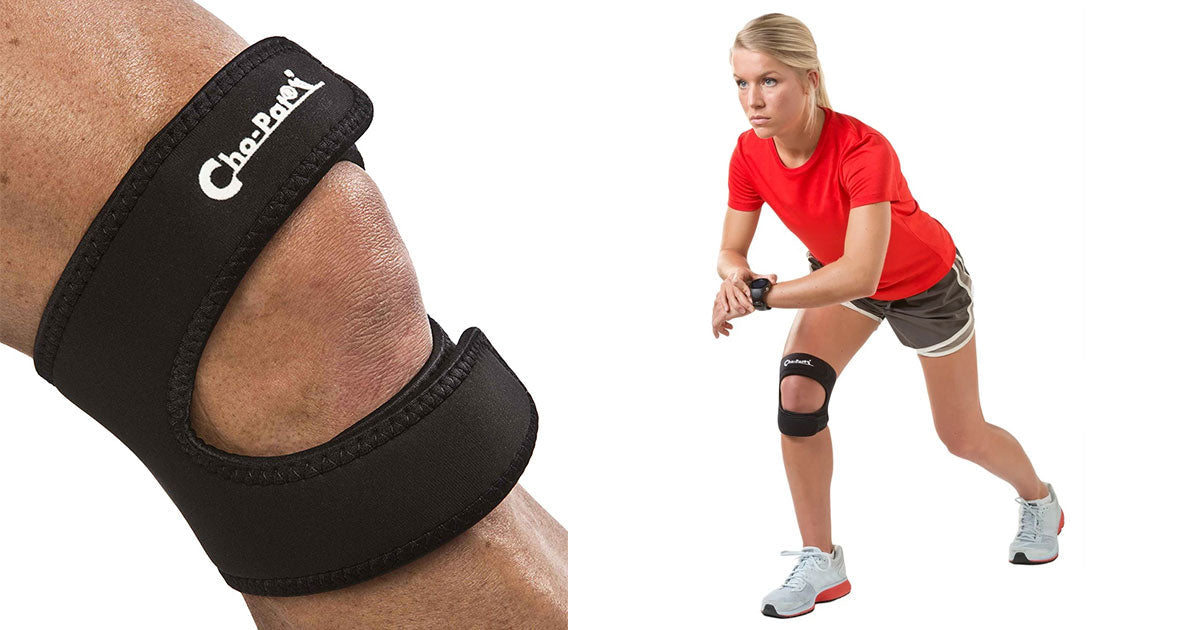Does it always feel like you're standing barefoot on hard pavement even when you're wearing comfortable shoes? In the morning, you may feel a sharp pain in your heels the moment you stand up for the first time. The soles of your feet may constantly ache even when you're standing still.
If any of these scenarios apply, you may have a condition known as plantar fasciitis. This condition affects millions of adults and makes living a normal life difficult in severe cases.
In this treatment guide, we will cover:
- What is Plantar Fasciitis?
- Plantar Fasciitis Risk Factors and Causes
- How to get rid of Plantar Fasciitis
- In-Depth Guide to Plantar Fasciitis Treatment
- Treating Chronic Plantar Fasciitis
What is Plantar Fasciitis?
The foot is full of small bones, ligaments, muscles, tendons, and soft connective tissues named fascia. The plantar fascia is a larger band of this connective tissue that runs down the sole of your foot between the heel and toes.
Plantar fasciitis is a condition that occurs when the plantar fascia gets inflamed and irritated. The most notable symptoms are:
- Sharp, stabbing, or searing pain in the arch of the foot and heel when bearing weight
- Mild heel swelling
- Worsened pain when standing still for a long time or performing certain exercises
- Pain reduces over the day
- Pain is most intense first thing in the morning or standing after a sedentary period
- How long does a plantar fasciitis last? Left untreated, it can become chronic.
At first glance, you may not think mild heel pain is much to worry about, but plantar fasciitis can easily disrupt everyday life. The pain can sometimes be severe enough that you can't put any weight down on your foot. This restriction could force you to use up sick days at work, miss out on hobbies, and struggle to care for loved ones.
Why is Plantar Fasciitis Painful?
Tension is to blame for plantar fasciitis' painful symptoms.
Imagine the arch of your foot as a bow, and the large fascia is the string. This tissue band absorbs the shock and keeps the shape of the hook as you put weight on your foot.
Sitting or laying down relieves pressure from the fascia and reduces pain. However, as soon as you stand up, especially if the bowstring has been tight for a while, the tension quickly and sharply returns. Over time, this constant irritation can increase damage to the connective tissue and lead to inflammation.
Most people have to walk for plenty of time every day, which means the inflammation never completely heals. Often, the condition worsens to chronic plantar fasciitis without treatment.
Plantar Fasciitis Risk Factors and Causes
Plantar fasciitis can happen to anyone, but overweight individuals have a higher risk.
Causes
Other risk factors that can make you more likely to develop plantar fasciitis include:
- Being over 40
- Arthritis
- Flat feet
- Low or high arches
- High-impact exercises like running
- Diabetes
- Starting a new exercise program
- Ankles rolling inward while walking
- Bad footwear
How long does plantar fasciitis usually last? Without treatment, it can become a chronic condition.
How to Get Rid of Plantar Fasciitis
Reducing Risk Factors
Addressing risk factors is one of the best ways to tackle plantar fasciitis and promote foot recovery.
If you have to stand at work all day, take off the dress shoes and swap them for sneakers with good arch support or custom orthotics. Overweight individuals can try to lose a few pounds to relieve severe pressure from the feet, too; knowing how long does plantar fasciitis last is often good motivation. Patients with arthritis or diabetes must carefully manage their conditions since they can both worsen fascia inflammation.
It's impossible to change every risk factor, but even minor adjustments can create huge relief.
In-Depth Guide to Plantar Fasciitis Treatment
How to get rid of plantar fasciitis involves a step-by-step action plan, including the following:
- Shifting weight off the heels
- Increasing barefoot activity
- Increasing ankle flexibility
- Changing shoes
- Strengthening foot and leg muscles
- Stretching foot and leg muscles
1) Shift Weight off the Heels
When you stand, shifting your weight to balance it evenly between the heel and ball of the foot relieves excess pressure under the heel. Moving your weight forward can also increase blood circulation to the heel; injured tissue requires a healthy blood supply to repair itself.
Shifting weight off the heel and leaning forward also gives the front of the foot and toes a chance to engage with the ground. This motion activates underused muscles along the bottom of the foot, increasing their strength and making the pain less likely in the future.
When you walk, concentrate on pushing yourself off the back foot rather than reaching your front foot out and landing hard on the heel. This change in your walking behavior can alternate the stress in a good way.
2) Increase Barefoot Activity
Most of us spend lots of time walking in shoes on flat pavement every day. The foot can bend and twist in many different ways, and this flexibility gives it the ability to conform to the surface we walk on. There are also various muscles in the foot that allow it to make rapid adjustments, and additional sensory receptors provide new data to the brain with every step.
When you constantly walk in shoes, your feet's actions become rigid and limited. By walking barefoot as often as you can on a variety of surfaces, you can change this. For example, walking around on sand, dirt, and grass gives your feet a chance to "learn" how to navigate the world better. It's also a valuable tool to learn how to take softer steps.
3) Increase Ankle Flexibility
One of the most significant risk factors for plantar fasciitis is a lack of ankle flexibility. Reduced range of motion in the ankles changes the mechanics in your feet and causes the heel to undergo an abnormal burden.
It's easy to stretch your calves in various ways, but one of the best ways is to walk up steep hills. It's a practical exercise that stretches your muscles while strengthening them at the same time.
The two most common calf-stretching exercises are:
- Runner's stretch: Lean against a wall and put the stiff leg behind you. Keep the knee straight and your heel down. Then lean forward until you feel your calf muscle stretching.
- Soleus stretch: Similarly, lean against a wall but put your stiff leg in front of you this time. Keep your heel down and lean into the wall, bending your front knee until you feel the calf muscle stretching.
These two exercises seem similar but ultimately target different muscle groups in the calves. Whichever one you do, the two keys to ensuring your ankle stretching exercises are effective and safe are:
- Keep your feet pointed dead ahead
- Do not let your arch collapse
4) Change Shoes
The foot doesn't require 24/7 support; in many cases, the wrong shoes themselves can cause plantar fasciitis.
The connective tissue and muscles in your feet need regular engagement to stay healthy. Even shoes meant to provide support can backfire if they give too much support for these muscles to remain active.
There is no one-size-fits-all approach to wearing shoes, so a little trial and error may be necessary. Features that may be beneficial include:
- Flexible soles
- Minimal toe spring
- Little support
- Low heel height
Flexible Soles
Shoes that can bend along the entire sole allows the foot to move in the motion of walking freely. However, stiff soles force the foot to conform to a restricted range of motion, so they only prolong the problem of "how long does a plantar fasciitis last?"
Minimal Toe Spring
A shoe's toe spring keeps the toes off the ground when you're walking or standing. This structure changes how the foot functions typically and can also limit the arch's shock-absorbing capacity. Although it's a challenge to find shoes without major toe springs, there are minimalist and barefoot-style running shoes that flatten out easier and keep your toes closer to the ground.
Little Arch Support
A structural arch does not get its strength from the middle, and the plantar fascia is no different. The two ends of that arch are the toes and the heels, so they are the parts that need regular contact with the ground to support your weight.
Arch supports in shoes create a scenario where the wrong part of the foot gets all the weight because they prop the arch in the center. In addition, the foot's natural arch provides shock absorption; using artificial support compromises the full abilities of the muscles, nerves, and blood vessels.
Low Heel Height
Wearing shoes with raised heels is structurally similar to spending all day standing on a ramp facing downhill. As a result of this awkward stance, the muscles in the Achilles and the calves shorten to adapt. Raised heels also tip your body forward, forcing the wearer to lean back to keep in balance, putting additional weight on the back of the heels.
If you're used to structured, supportive shoes, it's best to transition to new shoes slowly. Bodies need time to adjust to new conditions. If you regularly walk around barefoot at home, then the transition may be more manageable.
5) Strengthen the Leg and Foot Muscles
Because plantar fasciitis is typically associated with tissue degeneration in the foot, it's reasonable that focusing on strengthening those muscles can help reduce problematic symptoms.
You will naturally strengthen your foot muscles as you increase barefoot activity, but it's still a good idea to incorporate some exercises into your day.
Foot-Strengthening Exercises
- Short Foot Exercise: Form and maintain an arch in your foot. Hold it for five seconds before relaxing and doing it again.
- Foot Gymnastics: Any activity that involves some kind of foot dexterity counts. You could try to grab a pen with your toes, pick up marbles, pass the pen between feet, or stack cups. Remember, no using hands!
- Towel Curl: Put a towel on the floor. Using your toes but not the rest of your foot, try to pull in and bunch up the towel.
- Beach Time: Imagine you are at a beach and pretend to pick up and drop sand with your toes.
Leg-Strengthening Exercises
- Calf Raises: Raise yourself up on your toes, and then slowly lower yourself down. Focus on pushing off using your big toe on the way up.
- Squats: Bodyweight squats are an excellent way to increase ankle flexibility and build leg strength.
- Single Leg Balancing: Practice using one leg to balance yourself to increase lower leg and ankle strength on that leg.
- Toe Walking: Stand on your toes and take 15 steps without your heels touching the ground.
- Hip Strengthening: Various hip-strengthening exercises can also improve foot mechanics
6) Stretch the Leg and Foot Muscles
Evidence suggests that tight calves and tight hamstrings can contribute to plantar fasciitis. The following stretches can help relieve painful symptoms over time:
- Towel Stretch
- Standing Stretch
Likewise, it's essential to promote circulation and flexibility in the foot by stretching it. Stretching will also encourage healing by adding beneficial stress to the tissue, allowing the toes to engage in a full range of motion.
- Plantar Fascia Stretch
- Toe Extensor Stretch
Treating Chronic Plantar Fasciitis
How long does plantar fasciitis usually last? Left untreated, the condition usually becomes chronic and stays with you. However, you can treat even more severe forms of plantar fasciitis.
The R.I.C.E. Method
The following plan can give you immediate relief from heel pain at home:
- Rest: Sit down on the sofa or on a bed and stretch your legs.
- Ice: Cycle an ice pack on your heels for 20 minutes at a time.
- Compression: Wear compression socks or wrap swollen heels in an elastic bandage.
- Elevation: Rest your feet above heart-level on a cushioned surface to reduce swelling.
Remember, these steps provide immediate symptom relief but won't cure the condition. Try it after going for a run or after a long day of standing at work for best results.
Medications
In addition to ice and rest, anti-inflammatory medications like ibuprofen and other over-the-counter non-steroidal drugs can reduce pain for several hours. Always discuss your intention to start new medicine with your doctor before doing so. Likewise, pay close attention to the dosage instructions; for example, taking too many NSAIDs can harm your kidneys, liver, and stomach.
Exercises and Stretches
While high-impact exercises can worsen heel pain, certain types of activity, as discussed above, can improve it.
If you play sports or run, always perform warm-up exercises before beginning the activity. Pay particular attention to your calves and stretch them; be sure to make this part of your cooldown session too.
Massaging your feet can further release tension. For example, put a tennis ball on the ground and stand so your foot is on top of it. Then roll the tennis ball beneath your arch using a moderate amount of pressure. To combine this activity with icing, replace the tennis ball with a frozen water bottle.
Physiotherapy
If your heel pain is due to misalignment or problems with your gait, you may benefit from a physical therapist for further treatment. Physical therapy is a type of sports medicine that helps you get back to the activity you love. It will also help protect you from a recurrence of the inflammation.
A physiotherapist will examine you for stressful abnormalities that pressure the heels. They will then help you rebalance your stride and strengthen any weak areas, a plan which may include custom exercises and stretches to perform at home.
Custom Orthotics
Even the best shoes offer the worst support for some people, or you may simply have to wear unsupportive shoes due to a dress code. Whatever the case may be, custom orthotics can re-align your feet into a proper position.
Many custom orthotics are 3D-printed to fit your foot's precise needs. They're supportive, durable, and easily fit inside any shoe.
To get this process started, you must visit a podiatrist to have your gait assessed. These specialists rely on evidence-based foot-scanning technology to analyze gait and make manual measurements. The examination generates a "pressure map" of your feet, indicating where you put the most weight.
The podiatrist uses this chart to design the best orthotics for you, sending them off to engineers to print. In many cases, you could receive your orthotics in just two weeks.
If your orthotics aren't perfect, your podiatrist can make adjustments until they're just right.
Splints and Taping
For some people, especially athletes, heel recovery requires more support in the form of sports tape or splints.
At night, you can wear specially-designed plantar fasciitis splints that prevent your fascia from getting stiff and tight while you sleep. The split gently stretches your calf by propping up your ankle through the night.
Not everyone can sleep well with the splint, but you can still benefit from one. For example, if you can't sleep with a sling, you can gain a similar effect by wearing it for a few hours right before bed.
Otherwise, you can learn how to use sports tape from a physiotherapist. Unlike splints worn at night, taping can give you essential daytime support. In addition, if you can't take time off work or otherwise reduce your activity level to heal your feet, sports tape helps prevent further injuries and relieves mild pain levels.
Steroid Injections
Corticosteroid injections can effectively treat chronic inflammatory conditions, including plantar fasciitis. These injections reduce inflammation and block pain receptors in the affected area.
However, there is a downside to steroid injections; repeated doses can weaken the fascia and exacerbate the problem. They can also cause further discomfort and temporary numbness for a few days afterward.
Acupuncture
For those who prefer natural healing, holistic medicines like acupuncture also effectively tackle inflammation and plantar weakness.
Using carefully placed needles, acupuncturists stimulate your sensory nerves and cause your brain to release endorphins, which are pain-relieving chemicals. This interaction promotes faster healing and can reduce inflammation all over the body.
Surgical Procedures
If home remedies and other conservative plantar treatments on this list don't provide you with any relief, your physiotherapist may choose to recommend you for plantar fasciitis surgery. The best candidates for this surgical procedure have foot pain that:
- Persists for more than six months despite attempts at treatment
- Isn't caused by some other medical condition
- Significantly reduces their quality of life and ability to work
If you're approved to undergo a plantar fasciitis procedure, the surgeon will begin with a small incision in the fascia by the back of the foot. This incision releases built-up tension. The operation may either be an endoscopic or traditional open surgery. In either case, you will probably go home the same day of the procedure.
How long does plantar fasciitis last? Once you've had surgery, recovery time depends on the type of procedure you had. Endoscopic surgery isn't as invasive as open surgery; you may be back on your feet in a few days. With traditional surgery, however, you might have to wear a cast for a few weeks.
In either case, you must avoid high-impact activities like jumping and running for a few months. After surgery, your foot's support system is weaker at first. It may help to wear supportive shoes during this period.
OTHER RELATED PRODUCTS FOR PLANTAR FASCIITIS RELIEF
OTHER RELATED TOPICS:
HOW ARE PLANTAR FASCIITIS INSOLES DIFFERENT FROM REGULAR INSOLES?
5 THINGS A PLANTAR FASCIITIS INSOLE MUST HAVE TO BE EFFECTIVE
5 BEST HEEL CUPS FOR PLANTAR FASCIITIS
PLANTAR FASCIITIS, A REASON TO WORRY?
5 REASONS WHY YOU SHOULD STRETCH IN THE MORNING
PLEASE NOTE: The information on this website and article is for information only and should not be used as a substitute for consulting your doctor. Consult your doctor for proper diagnosis and rehabilitation








